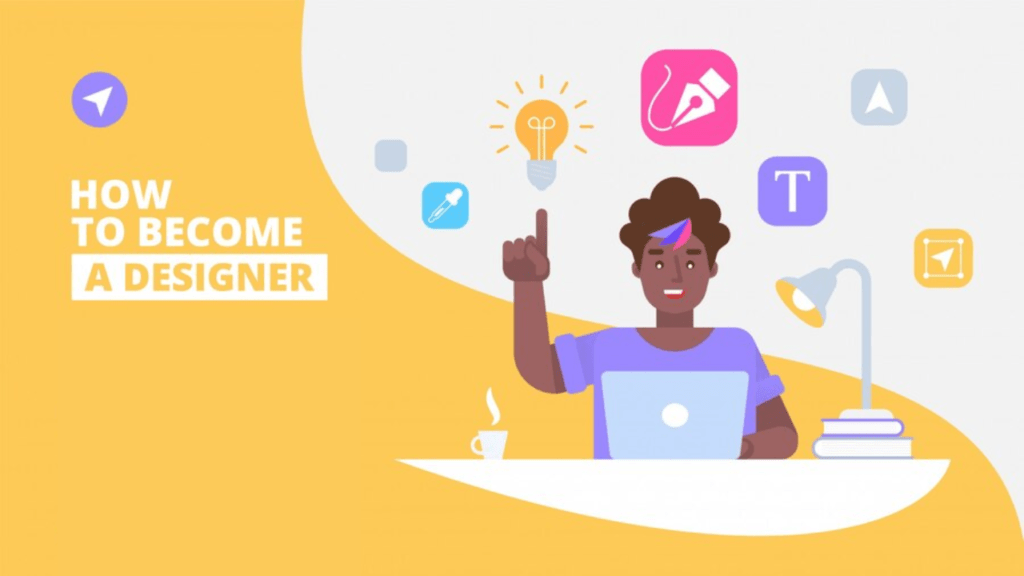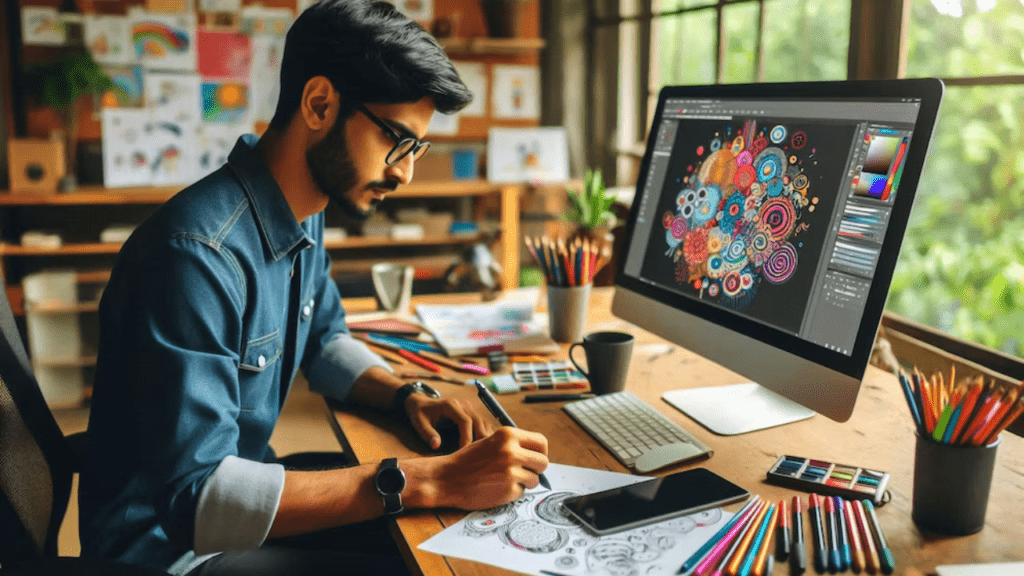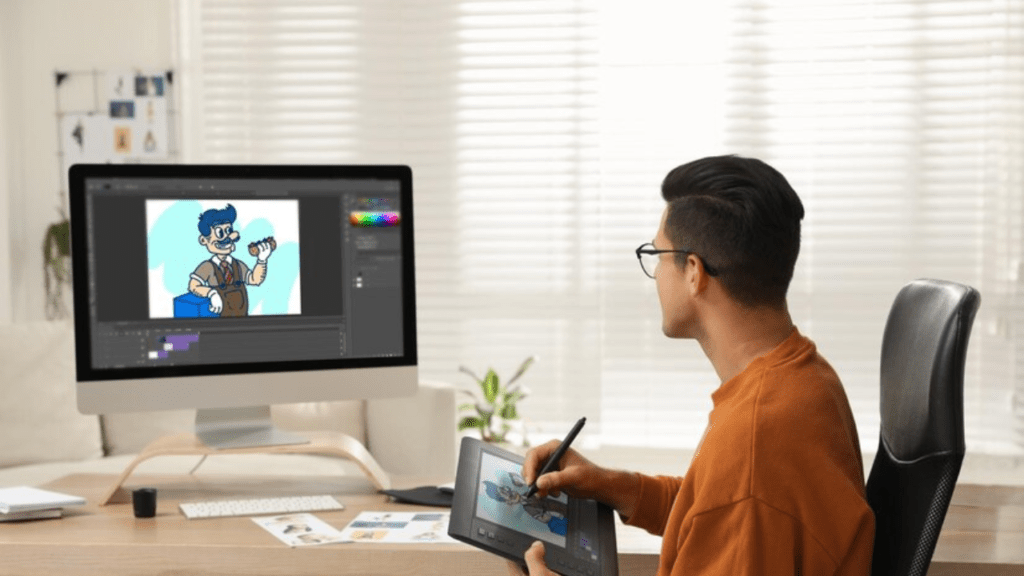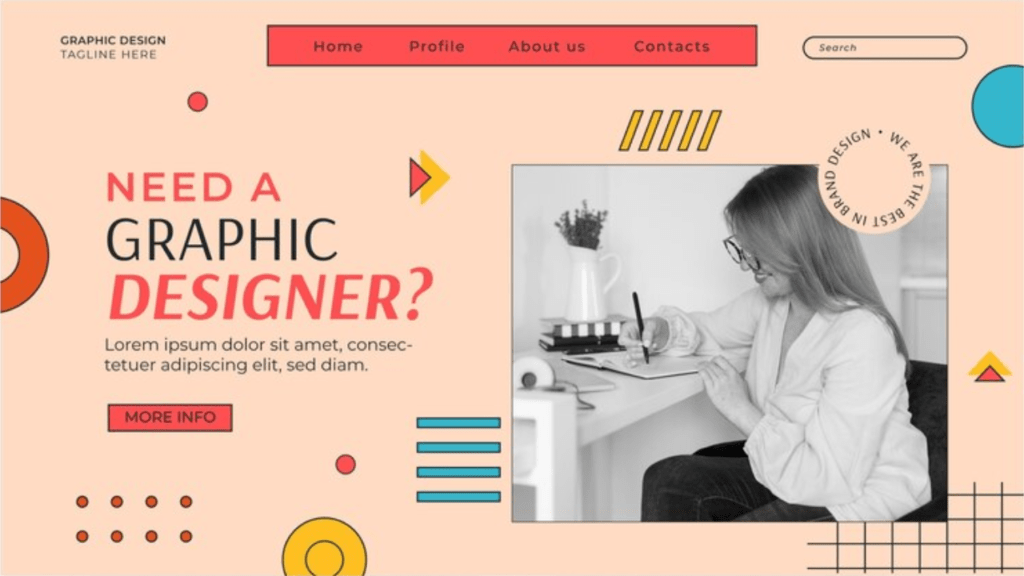
Starting a graphic design career may be both thrilling and stressful. With creativity as the core and tools as your allies, you can transform your artistic vision into impactful visual stories. Whether you aspire to freelance or join an agency, mastering how to start graphic design will set the stage for your success. This guide covers everything you need, from understanding basic concepts to building a standout portfolio.
What is Graphic Design?
Graphic design is the art and practice of creating visual content to communicate ideas. It merges creativity and technical skills, using typography, imagery, and layouts to convey messages effectively. From branding and advertising to digital media, graphic design impacts nearly every visual experience.
Aspiring designers need more than just creativity; understanding design principles and tools is crucial. You can develop a rewarding career in this field with a structured approach.
Why Pursue a Career in Graphic Design?
Graphic design offers versatility, freedom, and opportunities to work across diverse industries. Here’s why it’s worth considering:
- High Demand: Businesses need designers for branding, digital marketing, and more.
- Creative Fulfillment: Express yourself while solving real-world problems.
- Flexible Work Environment: Work freelance, remotely, or within creative teams.
- Lucrative Opportunities: Experienced designers often earn competitive salaries.
How to Start Graphic Design: Essential Steps

Understand the Basics of Graphic Design
Before diving in, familiarize yourself with fundamental design principles:
- Balance: Ensure visual stability in your designs.
- Contrast: Highlight important elements using contrasting colors, shapes, or sizes.
- Typography: Master fonts and their emotional impact on designs.
- Hierarchy: Direct viewers’ attention to key elements in a layout.
Studying these principles will sharpen your visual literacy and prepare you for practical projects.
Invest in the Right Tools and Software
Graphic designers rely on technology to bring their ideas to life. Essential tools include:
- Computer: A powerful PC or Mac with high-resolution capabilities.
- Software: Industry-standard programs like Adobe Photoshop, Illustrator, and InDesign.
- Drawing Tablet: Tools like Wacom tablets enhance precision and creativity.
Many beginners start with free or affordable software like Canva or GIMP before transitioning to advanced tools.
Learn Through Courses and Tutorials

Self-paced learning is key to success. Consider these resources:
- Online Courses: Platforms like Udemy, Skillshare, and Coursera offer beginner-friendly classes.
- YouTube Tutorials: Free videos cover everything from logo design to UX/UI basics.
- Books: Titles like The Elements of Graphic Design by Alex W. White provide timeless insights.
Commit to consistent learning to stay ahead in the ever-evolving field of design.
Practice and Build Your Skills
Hands-on experience is crucial. Follow these tips:
- Start Small: Create posters, social media graphics, or mock logos.
- Replicate Designs: Recreate existing designs to understand techniques.
- Participate in Challenges: Platforms like Dribbble host design challenges that spark creativity.
Experimenting helps you discover your style while building your technical expertise.
Build a Strong Portfolio

A compelling portfolio showcases your talent and versatility. Focus on:
- Diversity: Include various projects like branding, web design, and illustrations.
- Quality Over Quantity: Present your best work only.
- Personal Branding: Create a unique logo and consistent visual identity.
Host your portfolio on websites like Behance or a personal site to attract clients and employers.
Network and Gain Experience
Networking opens doors to collaborations and job opportunities.
- Join Communities: Engage with designers on LinkedIn, Dribbble, or Reddit.
- Internships: Gain real-world experience with design agencies or startups.
- Freelance Work: Platforms like Upwork and Fiverr let you work with diverse clients.
Every interaction expands your exposure and builds your confidence in the field.
Stay Updated and Evolve
The design industry is constantly changing. Stay relevant by:
- Following Trends: Keep up with popular styles and tools.
- Upskilling: Learn motion graphics, 3D design, or coding for advanced projects.
- Feedback: Regularly seek critique to refine your craft.
Adaptability ensures long-term success in your design career.
Common Challenges for Beginners in Graphic Design

Starting isn’t always smooth sailing. Beginners often face:
- Imposter Syndrome: Doubting your talent is common; focus on progress over perfection.
- Overwhelming Choices: With countless tools and resources, it’s easy to feel lost. Prioritize essentials first.
- Finding Clients: Building a reputation takes time; patience is key.
Recognizing these hurdles prepares you to navigate them effectively.
FAQs
How can I start graphic design without prior experience?
- Begin with free resources like YouTube tutorials and practice consistently. Build a basic portfolio showcasing your passion.
What tools are best for beginners in graphic design?
- Start with Canva for ease of use, then explore advanced tools like Adobe Photoshop as your skills grow.
How do I create a graphic design portfolio?
- Include 5-10 diverse projects, focus on quality, and use platforms like Behance to showcase your work.
Does becoming a graphic designer require a degree?
- No, many successful designers are self-taught. However, formal education can provide structure and networking opportunities.
Can I start graphic design on my phone?
- Yes, apps like Adobe Spark and Canva allow beginners to design on mobile devices.
How much time does it take to master graphic design?
- It depends on dedication. With consistent effort, you can achieve proficiency in 6-12 months.
Conclusion
Starting a career in graphic design requires passion, patience, and practice. By mastering the basics, investing in tools, and continuously learning, you can carve a niche for yourself in this dynamic industry. Remember, every expert was once a beginner. Take the first step today—your creative journey awaits!







